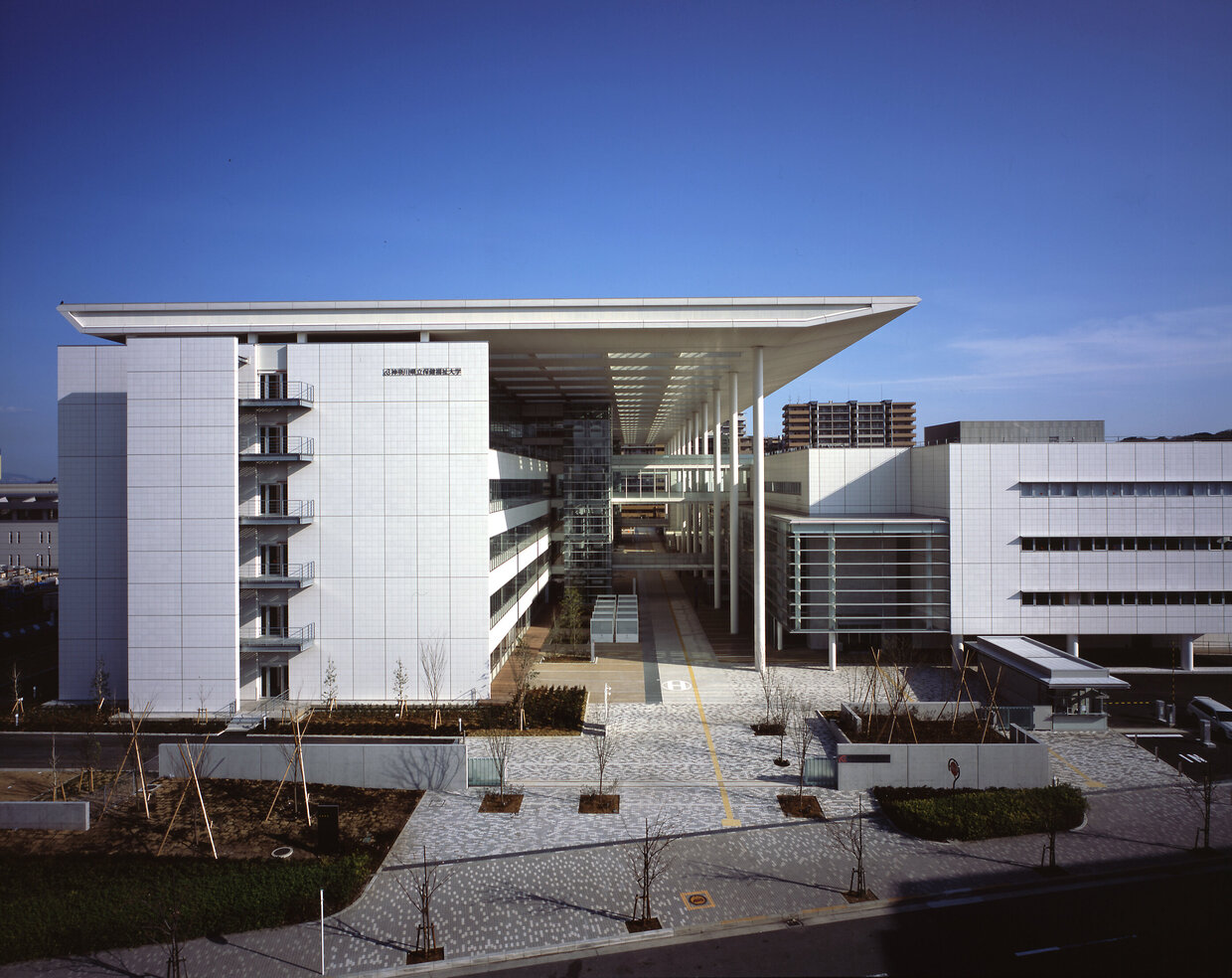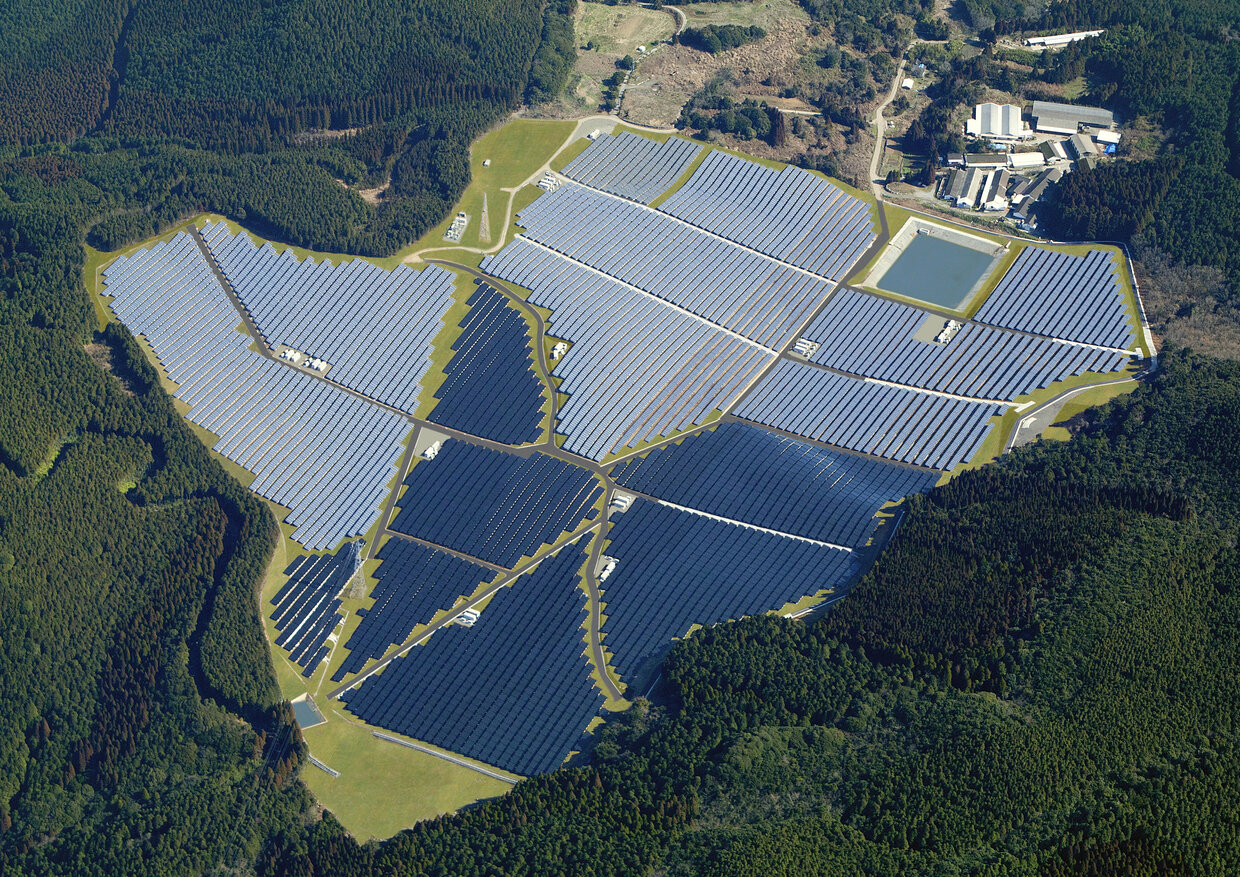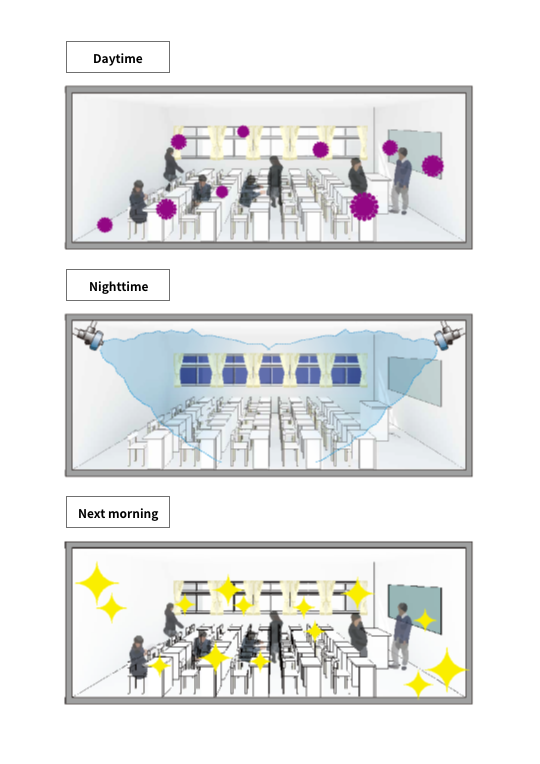Strengthening Earnings Capacity (4) New Businesses
PPP/PFI Business Initiatives
Among the new businesses, the company aggressively sought project orders in the PPP/PFImarket, which had been expected to expand further.
The company established an in-house special committee to consider participation in PFI projects, even before the Act on Promotion of Private Finance Initiative (PFI Act) entered into force. In the 1990s, the company engaged in overseas PFI projects, before such projects were introduced into Japan, including Stadium Australia and the Sydney M2 Motorway.
Following the entry into force of the PFI Act in September 1999, in December of that year, a department specializing in PFI was established at the company to pursue projects in Japan. In April 2000, the company was awarded Japan’s first large-scale PFI project, the Kanagawa University of Human Services Construction Project. Since then, the company has been involved in a wide range of PFI projects, including schools, hospitals, and cultural and sports facilities, and has carried out the largest number of domestic projects among the leading companies.
Obayashi Corporation’s major PPP/PFI projects during this period include the PFI-based contract for the design, construction and operation of the New Members’ Office Building, the PFI-based contract for the design, construction, and operation of the Otsu National Government Building, the Kamigyo Ward General Office Building Project, the Kanagawa Cancer Center Construction and Operation Project, the Kyoto University Katsura Campus General Research Cluster C3 Building Renovation Project, the Tokushima Prefectural Housing Consolidation PFI Project, and the Okubo Drainage and Purification Plant Construction and Operation Project.

Establishment of New Businesses
The Medium-Term Business Plan ’12 presented the company’s aims to focus on the following areas for establishing new businesses: strengthening the engineering business; engaging in the solar power generation business and other renewable energy businesses; and creating of new enterprises through business.
In terms of renewable energy, diversification of energy sources became a social imperative after the Great East Japan Earthquake. Developments, such as the entry into force of the Act on Special Measures Concerning Procurement of Electricity from Renewable Energy Sources by Electricity Utilities, led to deregulation and institutional changes. As a result, demand for solar, wind, biomass, and geothermal power generation increased.
In response to these energy-related developments, Obayashi Clean Energy Corporation was founded in July 2012 as a wholly owned group subsidiary to generate electricity from renewable energy and to supply and sell the electricity. As part of its undertaking to make effective use of company-owned land, the company installed solar panels that produce approximately 1 megawatt of energy on the roof of a lease distribution warehouse that it built in the town of Kumiyama in Kuse district, Kyoto Prefecture. As a result of this effort, Obayashi became the first major construction company to fully enter the solar power generation business in Japan.
Furthermore, Obayashi Corporation was selected by the town of Ashikita to operate a solar power generation facility with a rated output of approximately 15 megawatts (later increased to 20.1 MW). The large-scale solar power generation project (mega solar power station) on land owned by Ashikita in Kumamoto Prefecture, was put to public tender as part of the Kumamoto Solar Project. Obayashi founded OCE Ashikita Mega Solar Corporation in November 2012 to manage and operate this power generation facility. The Ashikita Solar Power Station was completed and started generating electricity in April 2014.
The company has continued to expand its solar power generation business in successive projects, with 19 power generation facilities (total output of 71.0 MW) in operation across Japan by March 2015.
The Business Innovation Department was established in April 2011, targeting the area of business innovation. It sought to find and develop new businesses by adopting flexible ideas and thinking that is not bound by preconceived notions. The company aimed to pursue new businesses through the transformation of technology into direct sources of profit. Technology developed in the construction business would be customized as solutions to untapped needs.
An example is the company’s development of energy-efficient, low-cost plant factories. It applied its innovations in production facility design, construction, and maintenance and operation in the construction business to address the growing demand for safe food and their reliable supplies. In November 2014, Obayashi founded Oak Katori Farm and commenced farming at a solar-powered plant factory in March 2016.
In October 2014, the Technology Division’s Business Innovation Department and the PFI Business Division were integrated and reorganized into the Technology Business Development Division. The objective of the reorganization was to further accelerate the creation of businesses in new fields by leveraging the company’s technologies and know-how. The Division aimed to make New Businesses the next pillar of earnings, following the Building Construction Business, the Civil Engineering Business, and the Real Estate Development Business.

For Workers on the Medical Frontline
In July 2011, Saratto Mist technology that cools the air by spraying fine mist was put into operation at Osaka Station City’s Toki-no-hiroba Plaza. Developed by Obayashi Corporation, the Saratto Mist system cools the air by spraying a fine mist that does not feel wet even upon contact with the skin and uses vaporization heat. The technology features a two-fluid spray nozzle capable of spraying mist with a particle diameter of 10 microns and is utilized in outdoor cooling systems.
The 2010s saw outbreaks of O157, norovirus, and novel influenza. Against this backdrop, there was a growing need for sterilization and disinfection of surfaces, such as handrails and fixtures, to prevent contact transmission at medical and welfare facilities as well as facilities used by many children. In response, Obayashi developed and repeated performance evaluation trials of its Multi Mist technology, which is an adaption of the Saratto Mist system. Multi Mist sterilizes an entire room by spraying mist containing a small amount of chemicals, helping to contain the spread of infectious diseases at medical facilities and prevent food poisoning at food product factories.
In June 2018, the company announced the development of Asperbuster, a technology to prevent mold infections in hospital renovation and demolition work. Prior to renovation and demolition work, the Multi Mist nozzle is used to spray an agent into the cavity above a ceiling to eliminate more than 90 percent of Aspergillus from the back surface of the ceiling. This significantly reduces the risk of infection from bacteria dispersal in only a short amount of time. This progression of technology and its applications is an example of one technology giving rise to a new technology, in turn creating a new business.
During the COVID-19 pandemic from 2020 to 2021, the company developed the Cassette Mist portable sanitizer, a system that can automatically sanitize surfaces when users are not present. Through delivering these products, the company has demonstrated its commitment to meet the needs of society.
Fighting infectious diseases is an eternal challenge. Obayashi Corporation will continue to develop technologies that contribute to the medical field and to the lives and livelihoods of the people.
